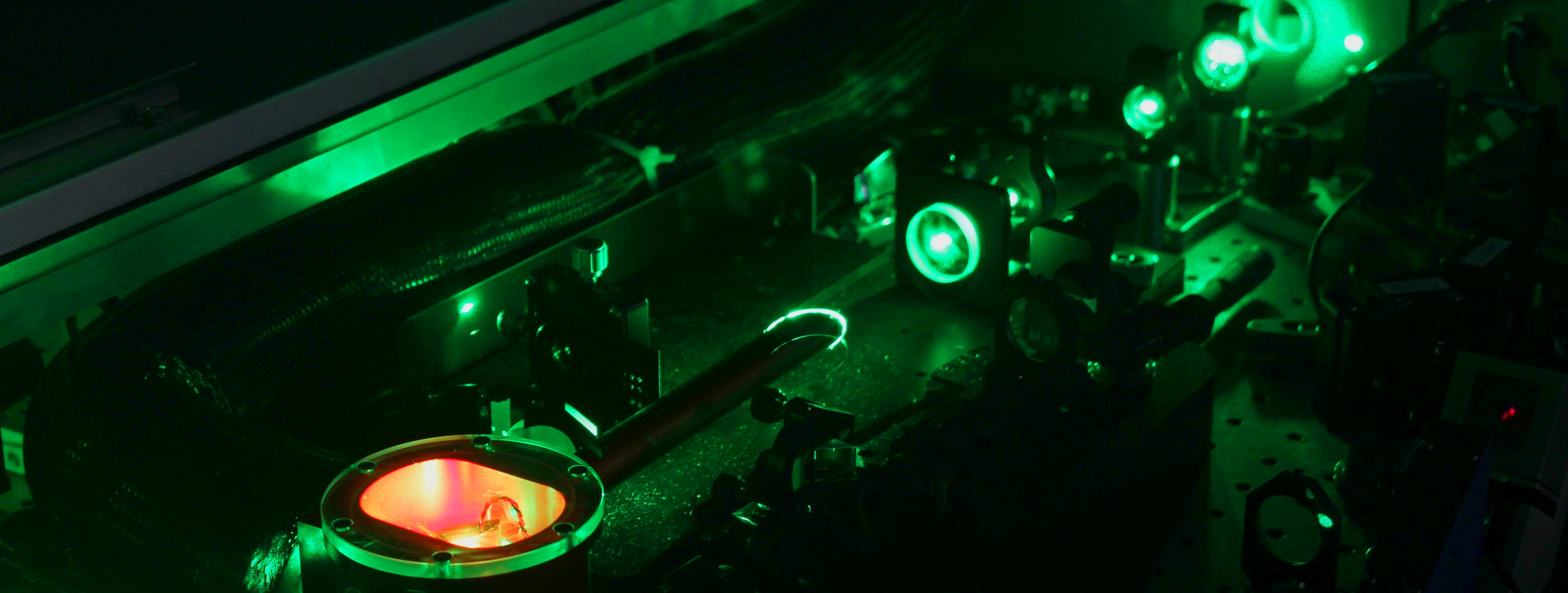The target of this laboratory is the generation and application of high-energy attosecond pulses to follow the electron dynamics in atoms, molecules and nanostructures. Particularly interesting is the investigation of the charge migration process in biomolecules, which is at the basis of the transmission of biological signals in proteins and DNA.

This laboratory has been realized thanks to the ERC (European Research Council) grant entitled to the ELYCHE project.
The main goal of this laboratory is the generation and the control of high energy attosecond pulses for the study of electron dynamics in simple and complex molecules.
Trains of attosecond pulses are generated through the high harmonic generation process. Isolated single attosecond pulses, with duration down to 130 as, are additionally achieved exploiting various temporal gating techniques and few-optical-cycle driving pulses with stabilized carrier envelope phase.
The temporal resolution obtained with these extremely short pulses allows for following the electron dynamics in atoms, molecules and nanostructures.
The main research activities of the high energy attosecond laboratory are the following:
1. Attochemistry: study of the interaction of light with polyatomic molecular systems by triggering ultrafast electronic motions. The ultimate goal of this research is the control of the chemical properties of molecules through a time-resolved manipulation of the electronic degrees of freedom.
2. Ultrafast processes in bio-relevant molecules: study of the electron dynamics in biomolecules like amino acids or DNA bases. The main research focus is the understanding of charge transfer processes which play a fundamental role in many relevant biological mechanisms, e.g. the transmission of bio-signals in proteins and DNA, or the photosynthesis.
3. Optoelectronic materials: study and coherent control of the electron dynamics in materials with high interest for optoelectronic applications.
LASER SOURCE
 The driving source is a Ti:sapphire amplified laser system which generates 25 fs pulses with an energy of 6 mJ, repetition rate of 1 kHz and stabilized carrier envelope phase (FEMTOLASERS – Femtopower Pro V CEP). These pulses are compressed by using the hollow fiber technique in combination with ultrabroad band chirped mirrors down to 4 fs withan energy of 2.5 mJ. Due to the high energy of the laser pulses the pressure gradient scheme has been implemented in the hollow fiber setup.
The driving source is a Ti:sapphire amplified laser system which generates 25 fs pulses with an energy of 6 mJ, repetition rate of 1 kHz and stabilized carrier envelope phase (FEMTOLASERS – Femtopower Pro V CEP). These pulses are compressed by using the hollow fiber technique in combination with ultrabroad band chirped mirrors down to 4 fs withan energy of 2.5 mJ. Due to the high energy of the laser pulses the pressure gradient scheme has been implemented in the hollow fiber setup.
ATTOSECOND BEAMLINE
Extreme ultraviolet (XUV) attosecond pulses are produced by focusing the high-energy few-optical cycle pulses in a gas cell filled with noble gases. The generated XUV radiation is focused by a toroidal mirror in the interaction chamber where the sample under investigation is placed. The attosecond beamline allows one to perform pump-probe measurements with attosecond temporal resolution and to fully characterize the XUV pulses. The spectral characteristics of the XUV radiation are measured by using a flat-field grazing incidence spectrometer. A velocity map imaging spectrometer (VMI) is used in the attosecond beamline to measure the momenta of electrons and ions generated by the attosecond pulses focused on the sample in gas phase.


